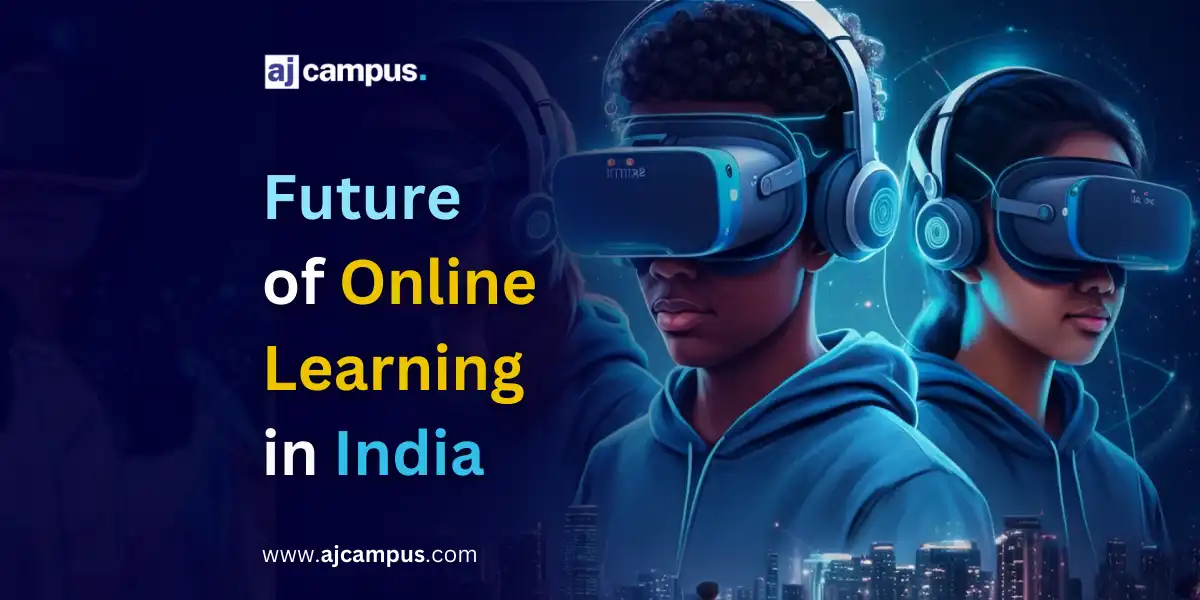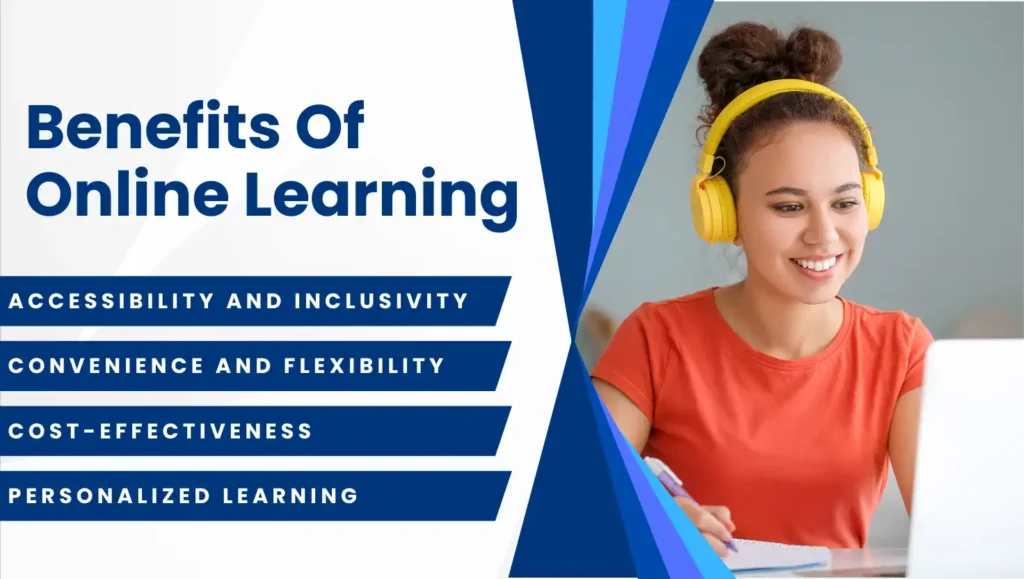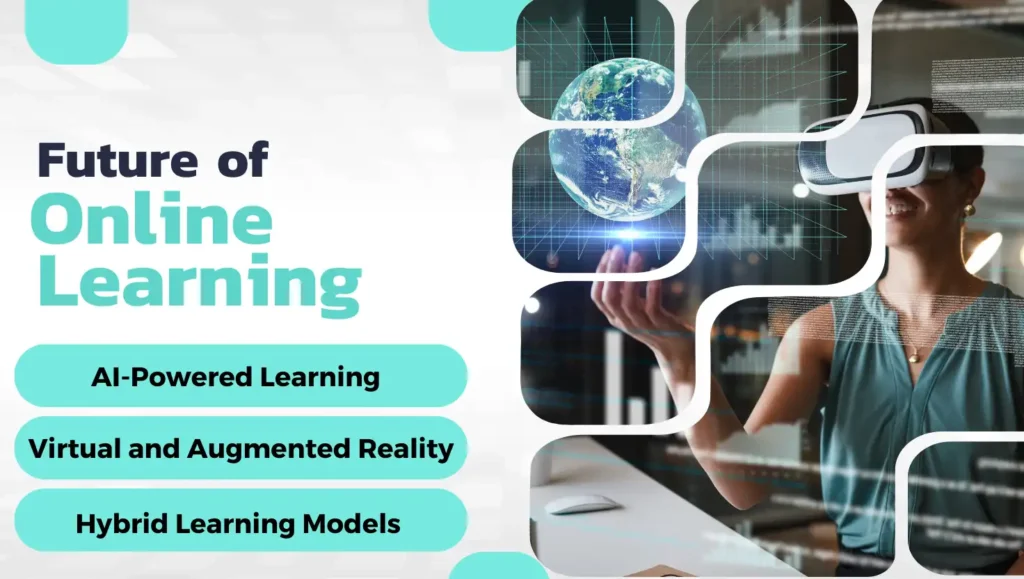Future of Online Learning in India
By Asha Rani, Last Updated 8 Feb, 2025 6 min read

Over the past few years, India has seen a greater adoption of Online Learning due to the growth and advancement of technology. In recent years, a large number of working professionals and students have joined various e-learning platforms to improve their skills. Additionally, based on current trends, it is anticipated that the number of people using online learning platforms would rise sharply in the near future.
India’s perspective on education and learning has undergone a dramatic change. The trend of online education in India has democratized access to high-quality education by removing socioeconomic and geographic obstacles, thanks to a surge in internet usage and a rapid technological revolution.
New Developments in the Indian System of Online Learning
One of the biggest systems of higher education in the world is found in India. The three primary components are course, college, and university. Its professional councils and the University Grants Commission oversee every aspect of the higher education system.
The dynamics of learning have changed significantly. In India, online higher education is developing, and several private colleges have appeared to provide students with undergraduate and graduate e-learning courses.
This blog examines how online learning is improving the educational landscape in India, why it is the way of the future, and how parents’ and students’ perspectives are changing to accommodate this new paradigm.
The Evolution of Online Learning in India
Although the idea of online learning is not wholly novel in India, it has only lately achieved substantial traction in terms of adoption and integration into the traditional educational system. The rapid increase in smart phones and increasing internet accessibility is now allowing an even wider section of the public to use digital learning platforms. This change has been further endorsed by government schemes such as Digital India and multiple e-learning portals launches.
Benefits of Online Learning

Accessibility and Inclusivity
One of the largest advantages of online education is that it can surmount geographical constraints. The best teachers that the nation has to offer can now teach the children from villages and remote areas, who were earlier, denied quality education.
Convenience and Flexibility
To the amazing flexibility offered through online learning, students can study at their pace and convenience. It can very much benefit especially those students who are taking up multiple courses simultaneously and working individuals alike, since learning is not confined to traditional classroom hours due to the course materials available at any time and from any location.
Cost-Effectiveness
Many Indian families have long been concerned about the expense of schooling. Due to the elimination of costs associated with transportation, lodging, and physical infrastructure, online education considerably lessens the financial strain.
A National Sample report Office (NSSO) report indicates that the average yearly cost of education in rural India is approximately INR 6,206 per student, whereas in urban regions, the same amount is INR 18,778 per student. These costs can greatly be reduced using online learning that reduces the expenses of quality learning.
Personalized Learning
Digital platforms utilize artificial intelligence and machine learning to enable personalized learning experience. Adaptive technologies in learning adjust the curriculum set for every individual by evaluating a student’s competence and weaknesses. Since the attention of the learners may be paid to certain skills, this gives a better mastering process.
Why Might Online Learning Be the Future of Online Learning in India?
Developments in Technology
Rapid technological improvements are increasing the interactivity and interest of online learning. Artificial intelligence (AI), augmented reality (AR), and virtual reality (VR) are transforming education by offering students immersive and hands-on learning opportunities. For instance, students can now carry out scientific experiments in a virtual lab or tour historical locations using virtual reality.
Increasing Adoption and Acceptance
Both parents and students are turning more open to e-learning. According to a Boston Consulting Group (BCG) and Internet and Mobile Association of India (IAMAI) survey, 76 percent of the respondents would continue to adopt the learning platforms after the pandemic, and 90 percent of the respondents believe that online education is helpful in skill development.
Government Initiatives
Different schemes have been operated by the Indian government to propagate online education. Online courses in all subjects’ right from primary levels to post-graduate levels can be accessed on the SWAYAM website run by the Ministry of Education.
The National Digital Library of India (NDLI) provides free access to large numbers of learning resources in this manner as well. These schemes aim at never letting a child fall behind, and democratization of education is the motto.
Evolving Perspectives Parents and students
Perception Change
Classroom-based education has always been highly valued by Indian parents. However, online learning has completely changed the trend as a pandemic-induced shift; 70 percent of parents in a survey of the Centre for Monitoring the Indian Economy (CMIE) find online education an acceptable alternative for traditional schooling.
Focus on Developing Skills
The emphasis is moving from memorization to the development of skills. These online platforms offer a vast array of courses that address a variety of hobbies and career objectives. Students learn skills and interests that are relevant to today’s workforce, such as digital marketing, coding, soft skills, and the creative arts.
Greater Involvement of Parents
Additionally, parents are now more involved in their children’s educational journeys thanks to online schooling. It is easier for parents to keep an eye on their child’s development, obtain educational resources, and communicate with teachers. As a result, parents now actively participate in their children’s academic development, encouraging a more cooperative approach to education.
The Future of Online Learning

There is increasing agreement that online learning is the way of the future rather than just a short-term fix. With the ongoing development of technology, anticipate ever more creative and engaging educational opportunities.
AI-Powered Learning: AI would be used in automating administrative tasks, making the learning pathway more personalized and offering instant feedback.
Virtual and Augmented Reality: Immersive technologies will generate dynamic and immersive learning environments and thus make learning more effective and enjoyable.
Hybrid Learning Models: This model will increasingly become the one adopted because it uses the best aspects of online and offline learning.
Lifelong learning: Online education will allow people to adapt to the ever-changing labor market and support lifelong learning and skill development.
Even though the current issues remain infrastructural, concerning quality control and the digital divide, the whole of India will undoubtedly be growing in terms of online education. India can utilize this revolutionary power to achieve the full realization of its potential, giving the best future possible for its people.
Online Learning has a promising future
Online Learning and remote learning have more benefits than drawbacks. Students can now affordably access smart devices and an internet connection thanks to recent technical advancements. Students all throughout the world can now incorporate the benefits of online learning into their academic programs thanks to these developments. They are free to study anything they wish and even concentrate on honing their extracurricular abilities. The main force behind online education’s improved development will be the freedom and flexibility it provides. In the near future, it will emerge as a significant learning method.
Conclusion
Undoubtedly, India’s online institutes are revolutionizing the country’s education system as it makes this resource more accessible, affordable, and flexible for students. This is because both parents and children have changed attitudes towards technology that will not permit online learning to go away any time soon as technology development progresses at a dizzying pace.
Funding digital infrastructure, innovation, and equal access to quality education by and for all is the only way forward. Online Learning is one of the valuable instruments that could eventually change the very face of teaching and learning. India could use this transition to unlock the massive potential of millions of children and set them up for success.
Related FAQs
What is the future of Online Learning in India?
It is anticipated that Indian education would have a creative, inclusive, and technologically advanced future. This covers the usage of virtual reality (VR), augmented reality (AR), online learning, and artificial intelligence (AI).
What makes online learning significant in India?
The potential of online education to overcome geographical obstacles is one of its biggest benefits. The greatest teachers in the nation are now available to teach students from rural and isolated places, who previously had little access to high-quality education.
In 2025, what role will AI play in education?
By 2025, teachers will be using AI in the classroom even more, and literacy teaching will depend more on tools that save teachers time and provide insightful information to direct one-on-one instruction.
Will AI have an impact on our future?
AI will eventually replace laborious or hazardous jobs, freeing up the human workforce to concentrate on jobs for which they are better suited, such those requiring empathy and creativity. People who work at more fulfilling occupations could be more content and happy.
Will offline learning become obsolete as a result of online learning?
There is no chance that online learning will replace traditional classroom instruction. Offline learning is essential for students’ general growth at the school level of education. Students in physical schools acquire social skills, interpersonal skills, extracurricular abilities, etc. in addition to academic skills.




